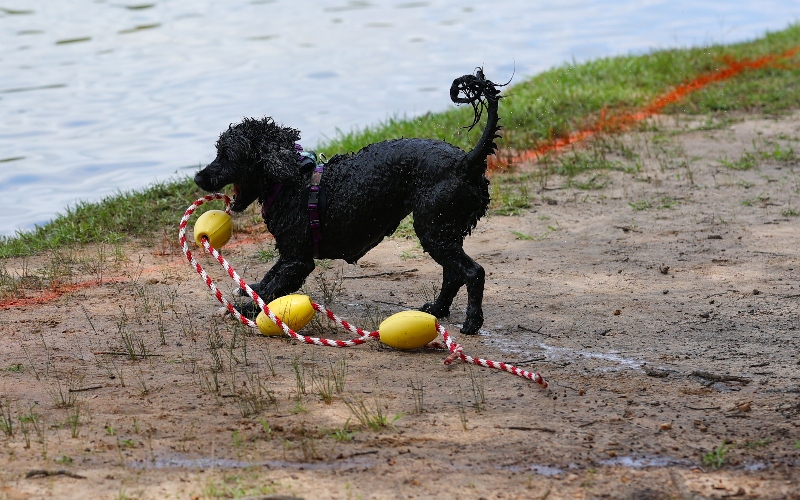Lets get bananas!
Published 10:23 am Tuesday, February 1, 2022
|
Getting your Trinity Audio player ready...
|
Let’s continue the list of “unsung heroes of nutrition” with the banana. The word “banana” originated from the Arabic word “banan” which means “finger.” The scientific name for banana is “musa sapientum,” which means “fruit of the wise men.” Here are a few of banana’s healthful benefits.
Helps lower blood pressure – That’s because of the potassium and magnesium in bananas. In fact, eating just two bananas a day, can reduce blood pressure by 10%. That pressure lowering effect may reduce the risk for both heart disease and stroke.
Better digestion – Bananas hold two types of fiber. Unripe bananas contain large amounts of “resistant starch,” which is a “soluble” fiber. Soluble fiber becomes somewhat “gel like” when mixed with water. As bananas ripen, their “pectin” content increases. Pectin, too, is a soluble fiber that gives bananas their spongy, fleshy form. Bananas are also a source of “insoluble fiber.” Insoluble fiber does not dissolve in water These fibers add bulk, which helps move food more smoothly through the digestive tract. Pectin absorbs excess water, so bananas help restore normal bowel function, especially in cases of diarrhea.
Trending
Stronger bones – Bananas help fortify bones, because of their potassium, calcium, magnesium and vitamin K content. Another benefit derived from bananas is their high amount of “fructooligosaccharide” (no I did not make that word up), which is a prebiotic that helps probiotic bacteria produce certain enzymes and vitamins. This compound also helps promote the body’s ability to absorb bone-building nutrients. Fructooligosaccharide is also found in Jerusalem artichokes, shallots, red onions and acidophilus yogurt, and is commonly used as an alternative sweetener in nutrition bars and diet sodas.
Bananas for a sharper mind – Bananas contain the “essential” (meaning that it cannot be synthesized by the body, and therefore must be obtained from the diet) amino acids “tryptophan” and “tyrosine,” which help the brain produce the neurotransmitters “serotonin” and “dopamine.” “Neurotransmitters” are chemical messengers within the brain that allow communication between nerve cells.
Provides energy – Bananas are a great snack, especially after exercise, because they are a rich source of carbohydrates. The carbohydrates (27 grams) in bananas quickly restore blood glucose reserves, which is vital to giving the body the capacity to build muscle, strength, and produce energy.
Here are a few “bananas handling tips”… Wrapping banana stems tightly in plastic wrap will make them last a few days longer. Peeling a banana from the bottom up, while holding the stem, will prevent stringy bits from clinging to the fruit. Keeping bananas in the refrigerator will allow the peel to turn brown or black, but the fruit won’t be affected. To ripen bananas faster, place them in a brown paper bag with an apple or tomato.
Here are a few more banana facts you might not know. Farmers in Southeast Asia and Papua, New Guinea were the first to domesticate bananas. India produces more bananas than any other country, which accounts for about 28 percent of worldwide production. China is number two with 10 percent. The majority of bananas Americans eat come from countries in Latin America and South America, including Colombia, Ecuador, Costa Rica, Honduras, Panama and Guatemala. Hawaii is the only place in the United States where bananas are grown commercially. There are over 1000 varieties of bananas grown around the world, subdivided into 50 groups. Banana flesh may be green, yellow, red, purple or brown when ripe. The type of banana you see in your supermarket is called a “Cavendish” banana. Americans eat, on average, 27 pounds (51 percent are eaten for breakfast, at home) of bananas per person every year. The highest average per capita consumption of bananas in the world is Uganda. Residents there eat an average of 500 pounds of bananas per person, each year. More than 100 billion bananas are eaten every year, around the world. Technically speaking, bananas are berries, and they don’t actually grow on trees. They grow on plants that are officially classified as an herb. Bananas grow, not from seeds, but from bulbs. Some wild bananas can be bubblegum pink, green and white striped, with flesh the color of orange sherbet, and even taste like strawberries when cooked. A cluster of bananas is called a “hand,” with individual ones called a “finger.”
There’s still one more week to sign up for a free nutrition and fitness consultation. Just go to my email address to sign up. Next week, I’ll be contacting all those who’ve signed up to choose dates for your consultation. Thanks to all who’ve signed up. David Crocker is a nutritionist and master personal trainer. Questions? Contact David at dwcrocker77@gmail.com.





